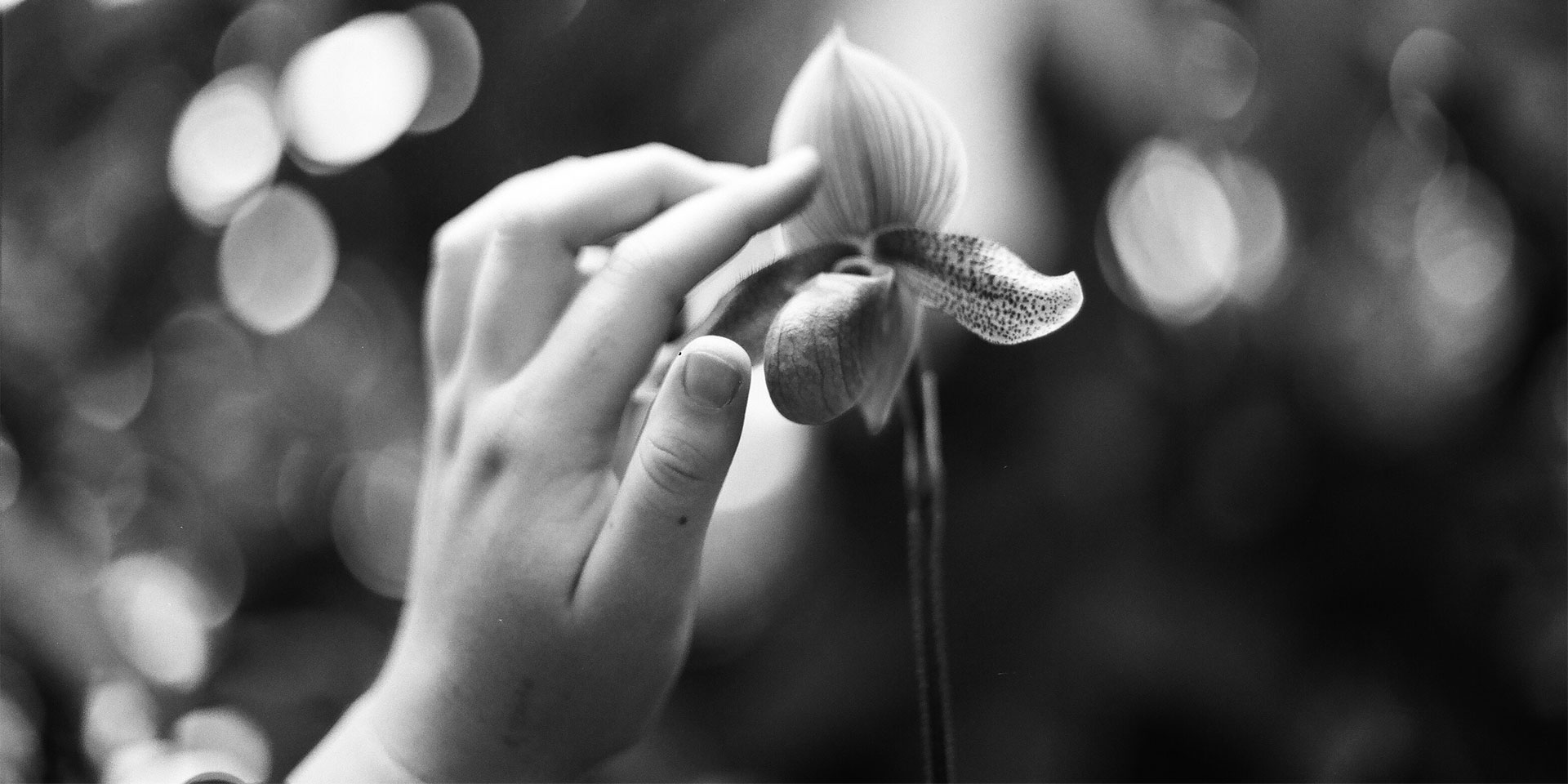In a society that does not place great value on sensitivity, raising orchid children—children who are hypersensitive to environmental conditions—can be an overwhelming experience for parents. At least, until they realize the vital role they can play in unleashing the extraordinary potential that such children have.
In the past, these children would have been considered as simply shy, or having difficulty adapting, but these labels say nothing about the extraordinary complexity of those who would later be called “highly sensitive children” or “orchid children.” Most children manage to develop even in unfriendly circumstances, but a minority of them will either be greatly stunted in the absence of proper care, or will flourish spectacularly in favourable conditions, according to some experts.
This sensitivity to their environment makes them thirsty for predictability. They adapt with difficulty to the changes that other children more naturally overcome.
A visit to the doctor, starting school, a trip, or interacting with a stranger are just a few examples of situations that cause them discomfort, scare them, or cause physical symptoms, such as headaches or stomach aches. Although very vulnerable to adversity, these children are endowed with abilities that can turn all this fragility into an important asset for truly inspiring development.
How do you know you have a very sensitive child?
Psychologist Elaine Aron created a 27 question survey to help parents, educators, or medical professionals find out if they are dealing with a highly sensitive child. According to the questionnaire, such a child can be a perfectionist, with a sense of humour, a lover of quiet games, very sensitive to pain, empathetic, deep, and more receptive to gentle corrections than to harsh punishments.
Highly sensitive people tend to have a rich inner life and are deeply affected by the environment in which they live, says Aron, who is also the author of The Highly Sensitive Person (1999). Extreme sensitivity occurs in about 20% of people and involves a high cost in energy for the individual.
Highly sensitive people tend to have a rich inner life and are deeply affected by the environment in which they live.
The way sensitivity is distributed depends 50% on genetic factors, concludes researcher Michael Pluess of Queen Mary University in London, following a study published in Molecular Psychiatry in 2020. The study was based in part on data obtained using a questionnaire designed by Pluess and his team of researchers (“Highly Sensitive Child”) to measure the sensitivity of children and adolescents. Pluess has even launched a website with information on this topic, which also provides tests that help adults and children alike find out where they are on the environmental sensitivity scale.
Hypersensitivity, or sensitivity to sensory processing, is the main trait of the highly sensitive child. It is manifested by an increase in the sensitivity of the central nervous system, a deep processing of stimuli coming from the internal or external environment and a cognitive style marked by an elaborate processing of information.
Highly sensitive children tend to be overwhelmed by the sensory information received from their environment. They tend to detect barely perceptible sounds and smells or to observe details ignored by other children. This overstimulation makes them tired faster, the need for rest being more pressing in their case.
It is normal for these children to feel more quickly depleted of energy, Aron believes, because what they feel in different situations is overwhelming. As such, their reactions and solutions can baffle those around them. The need for routine, strong empathy, and emotional reactivity in response to the feelings of others are other traits that complete the portrait of the hypersensitive child. Of course, sensitivity is distributed along a continuum and not all highly sensitive children share the exact same characteristics—not even introversion (about 70% of highly sensitive people are introverted).
Brain imaging studies of highly sensitive people show a higher level of activity in mirror neurons, which play an important role in empathy formation, but also more connectivity across different segments of the brain, which informs a high level of creativity, says Canadian researcher Tracy Cooper.
“A life itinerary is like the game of ‘Twenty Questions’.. Each new piece of information eliminates a large number of possibilities, but many still remain.”
In his recent decades of work, Jerome Kagan, a developmental psychology professor at Harvard, has studied differences in reactivity in children. Under conditions of increased sensory stimulation, 20% of the babies were very reactive, showing a “behavioural profile marked by vigorous motor activity and crying [in response] to unfamiliar experiences”. Highly reactive (or highly sensitive, as Aron calls them) babies are more likely to become shy, cautious children in unfamiliar situations, Kagan says, noting the tendency of less reactive babies to become spontaneous, brave, and uninhibited over time.
However, a baby’s temperament is not a guarantee that they will form a certain type of personality, but will rather act as a limit to what the child will become, says the psychologist. “A life itinerary is like the game of ‘Twenty Questions’. Each new piece of information eliminates a large number of possibilities, but many still remain,” Kagan concludes.
Jay Belsky, a humanistic ecology professor, studied negative emotionality in infants (their tendency to feel and manifest suffering, emotional lability, and an attention deficit in adverse circumstances). Young children with negative emotionality tended to either externalize (for example, through aggressive behaviour) or internalize their behavioural problems (by becoming depressive, or anxious). Still, an increase in the score of internalization or externalization of problems was recorded only when the babies with temperamental negativity were raised with a negative parenting style.
Although there are many unknowns related to the development of highly sensitive children, the environment still remains one of the most important predictors of how these children will develop.
Orchid children, defined by sensitivity
After 40 years of paediatric research, doctor and professor Thomas Boyce shared his conclusions about how dandelion children (robust, resilient, and able to bloom in almost any environment) and orchid children (more fragile, for whom the environment plays a key role in their development) develop.
The orchid is a metaphor used by Boyce to faithfully portray both the potential and beauty of highly sensitive children, as well as their vulnerability and fragility. Boyce referred to this special category using terms such as “thin-cheeked” children, excessively “environmentally permeable” or “mineshaft canaries”.
Following a study conducted with his collaborators in 2018, Pluess introduced a third metaphor, that of tulips, to describe the category of those with medium sensitivity, less fragile than orchids, but not as robust as dandelions.
Studies to date show that there are links, although not always strong ones, between extreme psychobiological reactivity, typical of an orchid child, and the predisposition to a set of temperamental characteristics, such as shyness, avoidance of new situations and negative emotionality, Boyce writes. The defining feature of such a child is sensitivity to social conditions. As such, these children can show either an extreme vulnerability in a negative, stressful environment, or an extraordinary resilience and harmonious development, in an environment that supports them emotionally.
Therefore, sensitivity to the environment in which they develop remains the major difference between dandelion and orchid children. In the first category we find children able to develop even in the hostile environment of orphanages, while some of the children in the second category wither even in their relatively protective family environment. With the exception of extremely harmful environments, being a dandelion child “must surely yield the greatest rewards at the smallest price”. Of course, every child needs a loving environment in which to feel safe (the fact that a baby dandelion develops even in an improper climate does not mean that they will not be affected in any way by these conditions). Most children will thrive in a protective, affectionate environment, but orchids will bloom absolutely spectacularly there, Boyce points out.
The same type of environment (either loving or dysfunctional) does not offer equal chances of development to both categories, because it is not identical for each child, explains Boyce. Orchid children experience the circumstances of their parental home differently, and the role they occupy in the home also shapes their development. The sex of the child, the order of their birth (youngest, middle child, or the first born), and the economic status of the family are only a few factors that influence this process.
The good news is that an orchid child is not a failed dandelion. On the contrary, under favourable conditions of upbringing, the results they obtain may be superior to those achieved by dandelions, says Boyce.
Caring for the orchids in our garden
Boyce says that what happens in childhood never stays in childhood, emphasizing the importance of the first years of life in tracing the trajectory of a lifetime, as well as the need for parents to understand where their child stands in the spectrum between dandelion and orchid in order to provide them with the proper form of support.
The orchid child must know that there is nothing wrong with them, and that sensitivity can prove to be their strong point. Parents have an essential role in the emotional validation of sensitive children, who tend to develop a real and persistent sense of shame, because they often get compared to dandelions. Highly sensitive children need to feel valued by their parents, just as they need to be constantly encouraged and approached with a balanced perspective whenever failure makes them doubt their worth.
All children need the affection of their parents, but orchid children’s need to constantly enjoy parental attention and love is more pressing.
There is ample evidence that a child’s development can be significantly influenced if there is at least one adult who constantly offers love, writes psychiatrist Robert Coles.
The orchid child (although they are not unique in this respect) needs to spend enough time with their parents. Also, a foundation of freedom and tolerance is mandatory for a highly sensitive child to open up and learn to express their creativity. In order to create such an environment, parents must encourage freedom of expression, but also look for opportunities for the creative expression of their child.
One of the real challenges for the parents of orchid children is to find the balance between protecting them and encouraging them to get out of their comfort zone. Knowing the child’s need for predictability, parents can protect them from certain stimuli, periodically check their level of discomfort, and allow them to decline invitations to events that they perceive as too demanding. At the same time, the orchid child also needs encouragement to venture into unfamiliar situations so that they can become a resilient and fulfilled adult.
The scientific theory of orchid children is meant to bring hope, Thomas Boyce concludes, wondering, in the end, if this could be the true revelation: that any human fragility can, in one way or another, be redeemed. And, if that is the case, parents can choose to see this fragility as less of a slippery slope and more of a springboard to a life full of beauty and meaning. Every child is, truly, “wonderfully made“.
Carmen Lăiu is a writer for ST Network and Semnele timpului.














